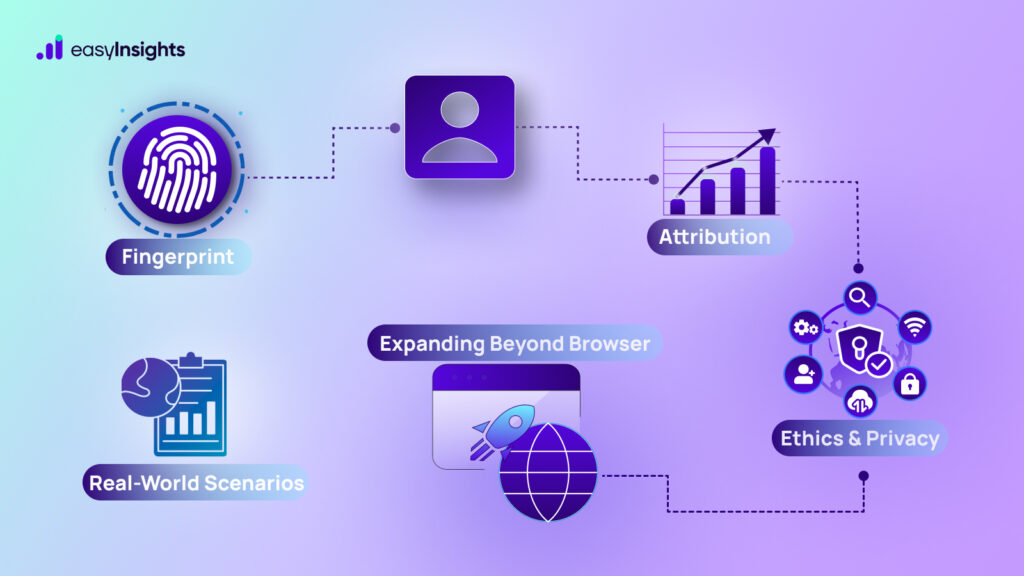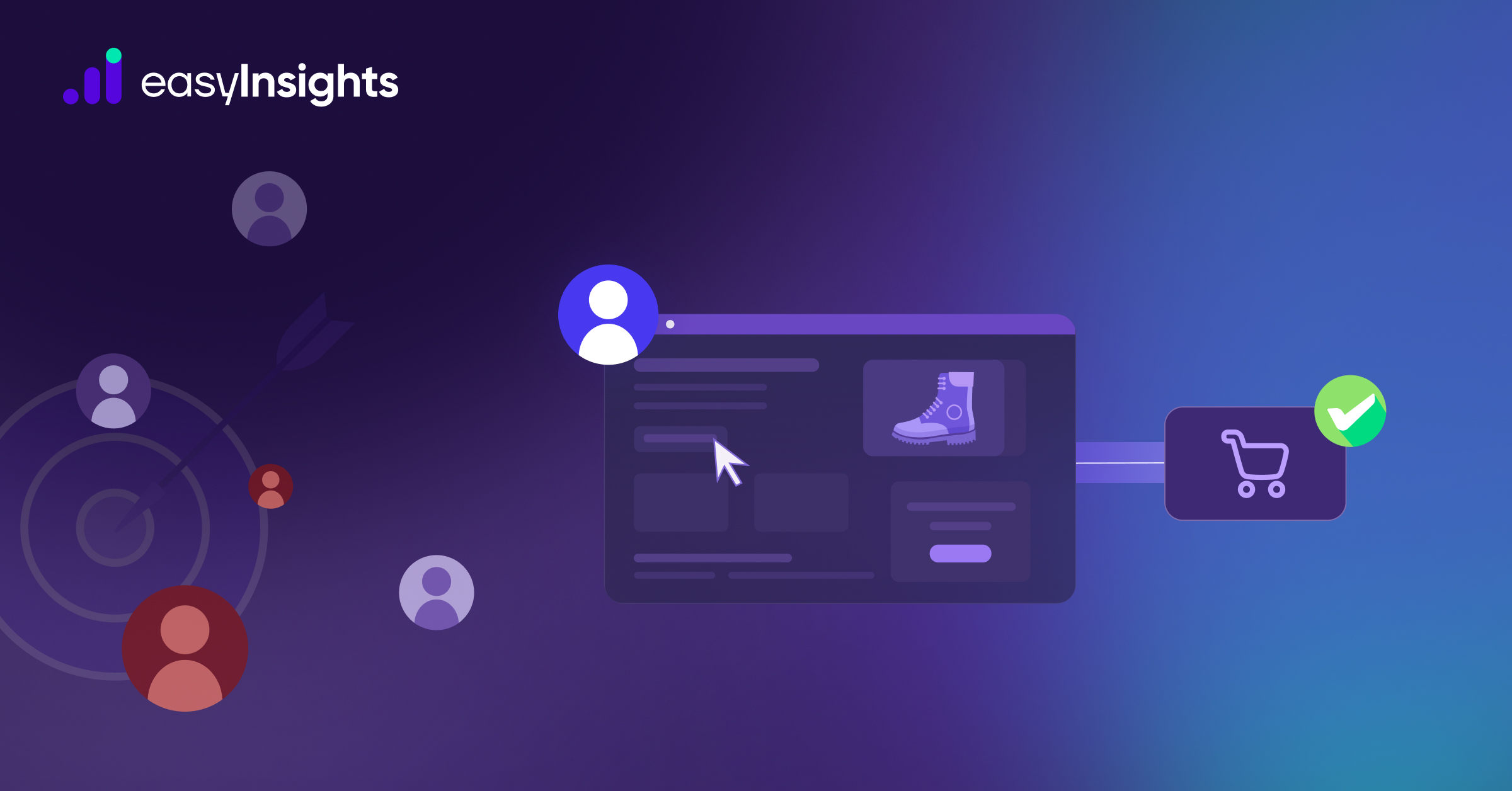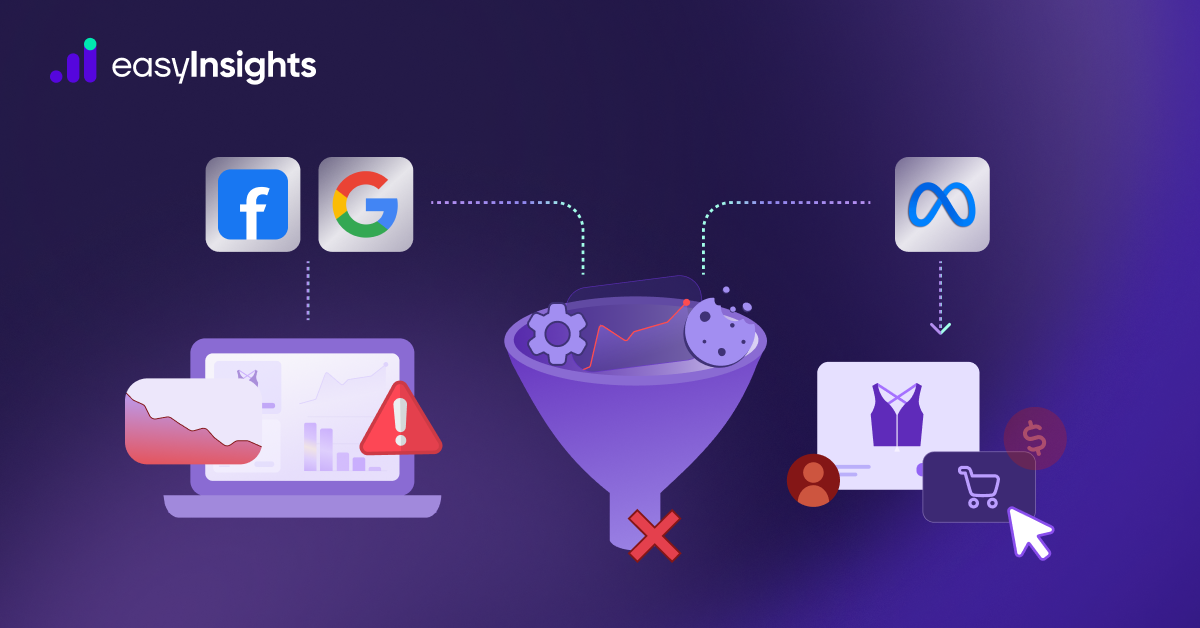
In today’s digital world, privacy rules are getting stricter, and third-party cookies, the old way of tracking people online, are disappearing. This is forcing marketers and data analysts to find smarter ways to not just follow a user’s activity, but truly understand who they are and what they want across all platforms.
One powerful solution is the combination of Digital Fingerprinting and Data Attribution. Think of digital fingerprinting like a unique “digital signature” your device or browser leaves behind based on things like your screen size, operating system, fonts, or even the way you type.
Data attribution, on the other hand, is all about connecting the dots, figuring out where your customers came from, what actions they took, and which marketing touchpoints influenced their decisions. When these two work together, they create a persistent, privacy-friendly identity map that helps brands:
- Recognize the same person across different devices, browsers, IP addresses, or even unique identifiers like crypto wallets.
- Get a 360-degree view of customer journeys without relying on third-party cookies.
- Accurately measure campaign performance by knowing exactly which ads, channels, or content drove engagement.
In this blog, we’ll break down how these two methods work, why they’re becoming essential in a cookieless future, and how they can help marketers get more accurate data, improve targeting, and build long-term customer relationships.
Jump ahead to:
What is Digital Fingerprinting
Digital fingerprinting is a technique used to recognize and track users by examining the unique combination of their device and browser characteristics without depending on cookies. This process gathers details such as screen size, installed fonts, browser extensions, time zone settings, operating system, audio setup, GPU type, and even subtle rendering differences in graphics or text. Each detail on its own may seem insignificant, but when combined, they create a distinctive “fingerprint” that is extremely difficult to duplicate.
Unlike traditional tracking methods that rely on static IDs or login data, digital fingerprinting works quietly in the background and remains effective even if a user switches to private browsing, clears cookies, or uses a VPN. Because of its ability to persist across sessions and devices, it has become a powerful tool for advertisers, fraud prevention systems, and analytics platforms seeking reliable identity matching.
Additonal Reading: Which Conversion tracking method works best for PPC Campaigns
Why This Combination is a Game-Changer
When digital fingerprinting and data attribution work together, they give marketers the complete picture, not just who a user is, but also how and why they interact with a brand.
Fingerprinting makes sure you can recognize the same person even if they switch from phone to laptop, clear their cookies, or log in from different locations. Attribution explains the story behind their actions, where they came from, which ads or channels influenced them, and what finally made them take action.
For example, imagine a person who sees your ad on their mobile, browses your site later on their desktop, and finally signs up using their crypto wallet in a Web3 app. Without this combination, you’d see three separate “visits.” With it, you can tie everything together as one continuous journey.
- Fingerprinting = “This is the same person across different devices and sessions.”
- Attribution = “Here’s why they acted the way they did.”
Together, they create a persistent identity map that works even without cookies, giving marketers better cross-platform insights.
The New Frontiers of Fingerprinting
Today’s fingerprinting goes far beyond tracking someone in a web browser. It now works in:
- Crypto Wallets – Identifying patterns in wallet addresses, transaction history, and interaction with decentralized apps (dApps).
- IPs & Location Data – Pinpointing general location and narrowing identity when paired with device type and browsing behavior.
- Behavioral Patterns – Recognizing unique traits like typing speed, scrolling habits, or mouse movements.
This is especially powerful in Web3 and other decentralized environments where users often remain anonymous. By combining technical details with behavioral clues, marketers can maintain continuity across completely different platforms.
The Privacy & Ethics Factor
With such powerful identification tools, privacy is non-negotiable. Marketers must use safeguards like:
- Anonymisation – Removing personal details so no one can identify an individual directly.
- Differential Privacy – Adding “noise” to data to protect individuals while keeping overall insights accurate.
- Consent Management – Making sure users know what’s being collected and can choose to opt in or out.
- Zero-Knowledge Proofs – Verifying actions without exposing sensitive data.
Following laws like GDPR and CCPA isn’t just about avoiding fines, it’s about earning and keeping user trust. Ethical data use will be the foundation of marketing in a privacy-first future.
Why fingerprinting is important for marketers
Fingerprinting is important for marketers because it helps them recognize and track users across devices, sessions, and platforms, even when traditional tracking methods like cookies fail. Here’s why it matters:
- Overcomes cookie limitations
With privacy regulations, ad blockers, and browsers phasing out third-party cookies, marketers risk losing visibility into user behavior. Fingerprinting creates a unique “digital signature” so tracking can continue without relying on cookies. - Provides cross-device attribution
If a user clicks an ad on their phone and later purchases on their laptop, fingerprinting can help link those actions together, giving a more accurate view of the customer journey. - Improves campaign measurement
Accurate user identification ensures metrics like conversions, ROAS, and customer lifetime value aren’t undercounted due to fragmented sessions. - Supports fraud detection
Fingerprinting can identify suspicious activity like multiple accounts from the same device, helping marketers prevent ad fraud and protect budgets. - Enables better personalization
Knowing that a returning visitor is the same person (even without a login) allows marketers to show relevant offers, recommendations, and retargeted ads.
If you want, I can also give you a short, punchy one-liner version that’s perfect for blog or LinkedIn captions.
How EasyInsights Makes It Simple
All this talk about fingerprinting, attribution, and privacy-first tracking can sound complicated, but it doesn’t have to be. That’s where EasyInsights steps in.
Think of it as your all-in-one control centre for marketing data. Instead of jumping between ad platforms, analytics dashboards, and spreadsheets, EasyInsights brings everything together in one clean view.
- Unifies your data – Combines data from ads, CRM, analytics, and more, so you get the full picture.
- Tracks users across devices – Whether someone clicks on mobile and buys on desktop, you’ll know it’s the same person.
- Gives accurate attribution – See which campaigns actually drive conversions instead of guessing.
- Saves time & money – No more manual reporting or lost tracking signals insights are ready when you need them.
So you can focus on making smarter marketing decisions, scaling campaigns, and improving ROI without worrying about messy data gaps.
Conclusion
As cookies fade away and privacy-first regulations tighten, digital fingerprinting combined with data attribution is becoming a must-have for marketers. It not only helps you track users across devices and platforms but also connects the dots to show why they engaged, clicked, or purchased. This means you get more accurate data, stronger personalization, better campaign measurement, and reliable fraud prevention, all without depending on outdated tracking methods.
That’s where EasyInsights steps in. Instead of juggling scattered dashboards and incomplete reports, EasyInsights gives marketers a single source of truth. By unifying fingerprinting, attribution, and advanced analytics, you can see which ads, channels, and campaigns drive results. In simple terms, it makes complex tracking easy, accurate, and actionable so you can spend less time worrying about data gaps and more time scaling your growth.
In a cookieless future, the brands that win will be the ones who understand their customers deeply, track them ethically, and optimize campaigns with confidence and EasyInsights is built to help you do just that.
To know more Book a demo Today!








